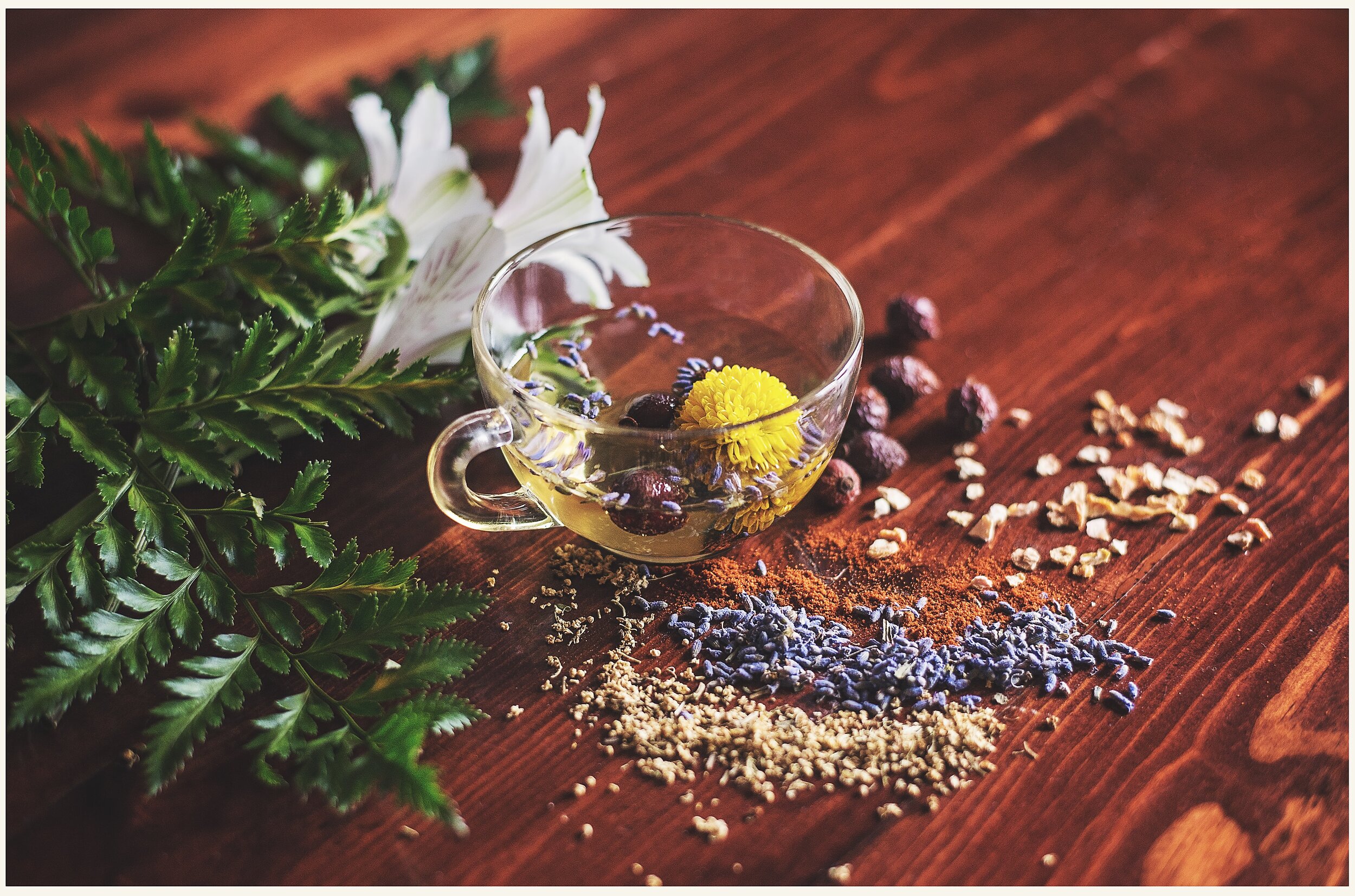Tisanes
Photo Credit Lisa Hobbs
An Exploration Of Botanical Teas
Tea comes in many forms, all of which share a common ingredient: the leaves of the tea shrub, Camellia sinensis.
Baby tea leaves, picked fresh, yield gentle, floral white tea. If you allow those same leaves to mature, ferment them until they’re dark in color, and then brew them, you have black tea (called “red tea” in China): rich and bold with bitter undertones. Green tea is in the middle: young leaves are quickly heated before aging, which preserves their verdant color and vegetal flavor.
While preparations may vary, the raw ingredient remains the same. If an infusion is made with tea leaves, it’s considered a tea.
But there’s another, lesser known part of the tea world: tisanes.
Tisanes (sometimes called botanicals) are a variation on classic tea. They don’t contain tea leaves; instead, tisanes are made with herbs, spices, flowers, roots, and other aromatics.
Throughout history, tisanes have been used as health elixirs, sacred drinks, and celebratory beverages. Drinking a great tisane is like drinking a great wine: an exceptional combination of flavor, aroma, and mouthfeel.
This is the story of tisanes—how they began, how they’ve evolved over time, and how to experience a world-class tisane for yourself.
Roobis Tea, Photo Credit TeaCora
Tisanes Across The World
The first recorded tisane is a familiar one. The Ebers Papyrus, a collection of Egyptian medical knowledge dating back to 1550 B.C., talked about steeping chamomile leaves in hot water. The resulting infusion was used to relax the mind and honor the gods[1].
The Khoi, a tribe native to South Africa, created tisanes from rooibos, a red mountain bush whose leaves impart sweet notes of caramel and vanilla. Today, rooibos is one of the most popular tisanes in the world; its crimson color is iconic and you can find it in many cafes.
Mint tisane originated in Morocco, where it’s still popular as an evening drink. It’s served after a heavy meal to help with digestion.
In North America, the Cherokee and Iroquois people made dandelion tisanes. They would steep the stems and flowers to create a sweet, mild tonic, which they would then drink to relieve pain and calm the nerves.
One of the most interesting tisanes comes from Polynesia. During celebrations, religious gatherings, and political meetings, local tribes prepare an elixir from a psychoactive root called kava. When drunk, kava numbs the tongue and ensnares the senses, creating a sense of relaxed well-being like the one you get from alcohol.
Throughout history, tisanes have been a celebrated part of daily life—and today, thanks to local botanists and artisan tea makers, tisanes are enjoying a cultural renaissance.
Herbal Tea, Photo Credit Tamara Schipichi
Modern Tisanes
Like great wine or great food, a great tisane begins with quality ingredients.
World-class tisane makers find botanicals that were grown with care in rich, healthy soil. They consider terroir—the environment in which a flower, root, herb, or other aromatic grows, and how that environment comes through in its taste and aroma. They also take great care to preserve their botanicals, capturing the essence of their flavor at peak freshness.
Leaves & Flowers, a small women-owned collaboration, is an outstanding maker of modern tisanes. Their aromatics come from a close community of sustainable, local California farms. Each ingredient is sorted by hand to remove any imperfections, then dried in a climate-controlled room that preserves it at the height of its potency. Blends are made in small batches, all by hand.
Standout tisanes include Ikebana, an elegantly complex blend of wild bergamot, anise hyssop, lavender, chamomile, and rose; and Zaracha, a singular tisane made of roasted Japanese pea plant that has notes of light smoke and toasted grains.
Other tisane makers take a different approach. Canada-based Namasthe specializes in foraged tisanes—tisanes made with wild botanicals gathered from the Coast Salish mountains.
Their Cabin Tea is a stunning tisane made from wild foraged Douglas fir, pine needles, birch bark, and other woodsy aromatics. It’s bracing and slightly sweet, with notes of citrus and forest resin.
La Forêt is another unique offering. It mixes wild foraged spruce tips, usnea lichen, and labrador rhododendron; the result is a calming tisane reminiscent of a misty morning walk in the woods.
Tisanes expand beyond the province of classic tea. They’ve been a part of nearly every culture throughout history, and they’re an opportunity to experience the world through taste and tradition. Whether hot, iced, or mixed with sparkling water, tisanes are a refreshing addition to the day.
References
1. https://babel.hathitrust.org/cgi/ptid=coo.31924073200077&view=1up&seq=1&skin=2021



